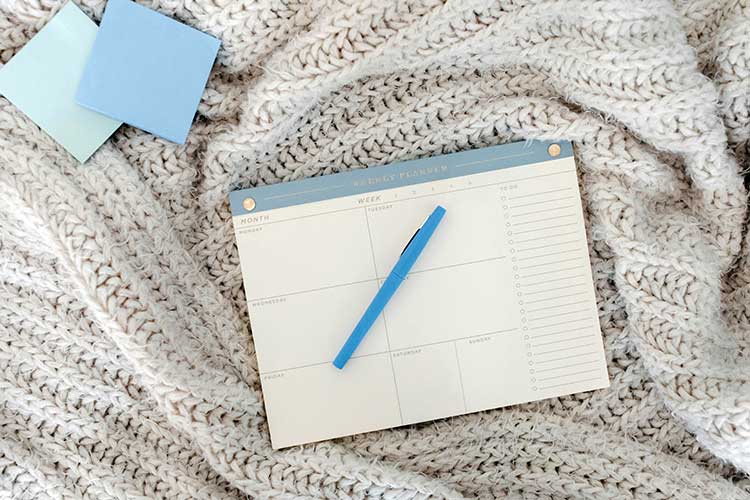** Winterize Your Mindset:
LifeSkills Academy Blog
Check back often to find interesting information and updates.
** Winterize Your Mindset:
Written By: Sandi MacCalla, Founder - LifeSkills Academy ~ 12/15/2025
How to Stay Motivated When It’s Cold,
Dark, and…Let’s Be Honest…A Little Dreary**
There’s a special magic to winter - if you know where to look.
Yes, it’s cold. Yes, the sun clocks out early. Yes, some days your motivation feels like it hit the snooze button and never came back.
But winter also offers something the faster seasons don’t: the gift of quiet. A built-in permission slip to slow down, recalibrate, and use the stillness to strengthen your inner world.
Think of this season as your personal retreat—one designed for reflection, renewal, and small but mighty forward motion. With the right mindset, winter becomes less of a survival season and more of a deeply fulfilling one.
Why Mindset Matters More in Winter
Mindset is the lens through which you experience everything—especially when conditions outside aren’t exactly cheering you on. A winter-ready mindset helps you:
- transform cold months into a time of quiet productivity
- stay emotionally balanced when daylight is in short supply
- tap into the power of small steps, routine, and internal resilience
When I feel winter resistance creeping in - the heaviness, the slower mornings, the “I’d-rather-hibernate” thoughts - I turn to quiet contemplation: prayer, reading, or even a little research rabbit-hole that resets my focus. These moments remind me that mindset isn’t something we wait for; it’s something we shape.
And winter is a wonderful time to shape it well.
Strategy 1: Try “Winter Laser-Tasking”
This is your seasonal superpower: short, focused blocks (40–50 minutes) devoted to one meaningful task - preferably in the morning, when your mental drive is highest.
To make laser-tasking work:
- Set SMART Goals. Let clarity be your guide.
- Prioritize and Calendar Tasks. What gets scheduled gets completed.
- Group similar tasks. Reduce context-switching—it steals up to 40% of your productivity.
- Practice Monotasking. One task → cleaner results.
- Minimize Distractions. Turn off notifications and set a boundary around your focus time.
Use this method on small goals and watch how your confidence grows for tackling the big ones.
Strategy 2: Aim for 1% Better
Forget dramatic reinventions. Winter is not the season for aggressive overhauls—it’s the season for micro-wins.
One tiny improvement per day compounds over time and keeps your momentum alive in a realistic, sustainable way.
Strategy 3: Energize Your Mornings
Does your morning routine actually nourish you?
If it doesn’t lift you, adjust it.
If it drains you, replace it.
Your morning sets the tone for everything that follows.
Strategy 4: Simplify Your To-Do List
When you’re overwhelmed, motivation shrivels.
Trim your list to the essentials—the tasks that genuinely move you forward.
Winter is an ideal time to lighten your load, not add to it.
Strategy 5: Boost Your “Feel-Good Chemistry”
Intentionally activate the neurochemicals that support your winter well-being:
- Dopamine: learn something new
- Serotonin: practice gratitude
- Endorphins: move your body
- Oxytocin: hug, connect, or spend time with a beloved pet
These are tiny acts with big emotional impact.
Strategy 6: Create Rituals That Signal Start and Stop
Winter thrives on rhythm. A few ideas:
- turn on a certain lamp to begin work
- play a designated “focus” playlist
- transition out of work with tea and soft lighting
- use a simple breathing ritual (like box breathing) to reset
Rituals bring structure to days that feel a little too quiet.
Strategy 7: Embrace Novelty
Boredom drains energy fast.
Try learning a new skill, exploring an interest, or taking a small creative risk.
Novelty wakes up the brain and gives winter a spark of curiosity.
Strategy 8: Seek Social Connection
Don’t let isolation creep in.
Plan coffee dates, community volunteer options near you, attend seasonal events, or join small gatherings. Emotional warmth is a powerful antidote to seasonal sluggishness.
Strategy 9: Activate Winter Joy
Winter fun isn’t just for kids. Schedule activities that remind you this season holds beauty and adventure:
- ice skating
- winter hikes
- cozy game nights
- craft afternoons soup-and-story gatherings
Don’t get through winter - engage it.
Strategy 10: Build Your Own “Hygge Haven”
Create a sanctuary of coziness: soft blankets, warm mugs, gentle lighting, fluffy socks.
A restful home environment becomes an energy source.
Strategy 11: Practice Gratitude
A few minutes of gratitude recalibrates your mindset and boosts your natural serotonin. Winter is an ideal time to notice small blessings.
Click to download the Gratitude Journal Template here!
Click to download the Gratitude Mindset Template here!
Strategy 12: Dress for Warmth and Movement
Being cold saps your motivation instantly. Dress warmly and comfortably, and you’ll naturally move more - and engage more.
A Winter Challenge for You
Choose one, two, or three of these strategies that spark your interest.
Practice them consistently this season. Then pay attention to the subtle shifts in your mood, energy, and perspective.
Keep what helps you. Release what doesn’t. Shape the winter you want.
Inspiration
“In the depth of winter, I finally learned that within me
there lay an invincible summer.”
~ Albert Camus
A perfect reminder that winter doesn’t diminish your inner strength—it reveals it.
We invite you to join and explore our community of continuous learners. Sign up for newsletters and class notices to stay informed about valuable life skills content. Together, let's build a foundation for success in our lives and our world.
Learn Essential Kitchen Skills and Build Cooking Confidence in Cold Weather
Written By: Sandi MacCalla, Founder - LifeSkills Academy ~ 12/08/2025
When the weather turns frosty, the kitchen becomes one of the coziest classrooms in the house. Winter practically invites us to cook—warm ovens, simmering soups, the smell of chocolate chip cookies drifting through the house. And whether you’re teaching a bright-eyed mini-chef or you’re a delightful late-bloomer finally embracing your inner Julia Child… winter is the perfect time to build cooking confidence.
Because let’s be honest: some of us learned the hard way that cookies do not bake faster at 450°. And that reading the recipe after you start is not, in fact, a personality trait—it’s a hazard.
Good news? Cooking is a life skill anyone can learn, and winter is the perfect moment to start.
Beginner Tips for Budding Chefs (Kids & Late-Bloomers Alike)
1. Safety First
Before we sauté, whisk, or flambé anything (let’s save the flambé for much later), let’s cover safety—because confidence in the kitchen grows from knowing how to work safely.

-
- Read the recipe—first, and all the way through.
This may be the most overlooked step in cooking history. Encourage kids (and yourself!) to read the recipe before turning on the stove. Then read again as you go—recipes are basically instruction manuals for edible success.
- Read the recipe—first, and all the way through.

-
- Knife Safety made simple
Teach kids the “claw grip” and start with safe, kid-friendly knives if needed. Here’s a great beginner video:
https://www.youtube.com/watch?v=YrHpeEwk_-U - Heat Safety matters
Pan fires happen—especially when enthusiasm outruns experience. If something flares up, smother it with a lid to remove oxygen.
No water. No waving the pan around like a firefighter in training.
- Knife Safety made simple
2. Measuring Like a Pro
Cooking and math go together beautifully, and winter is the perfect time to turn the kitchen into a hands-on learning lab.

-
- Pre-measure ingredients
Setting everything out ahead of time—called “mise en place”—keeps your cooking process calm, organized, and delicious.
- Pre-measure ingredients
-
- Practice simple math
Kid chefs love adjusting servings. Doubling a recipe? Halving it? Suddenly fractions become fun. - Remember: baking is science, cooking is art
Baking behaves best when measurements are exact.
Cooking? A little flexibility adds flair. (Accidentally adding cinnamon instead of cumin? Not so much flair—but a good learning moment.)
- Practice simple math
3. Show Your Kitchen Some Respect
The kitchen truly is a magical place for connection, creativity, and warm family moments. Respecting the space makes cooking smoother and safer.

-
- Gather everything you need before you begin
Bowls, ingredients, pans, utensils—having them ready prevents mid-recipe panic. - Clean as you go
This one is a gift to future you.
Also: fewer dirty dishes at the end = more time to enjoy your creation. - Avoid cross-contamination
Teach kids early about separate cutting boards, handwashing, and keeping raw foods far from ready-to-eat foods.
- Gather everything you need before you begin
Fun Recipes to Help Mini-Chefs Explore
Let the kitchen become a playground! Here are cozy, kid-approved, beginner-friendly winter recipes to try:
🍪 Chocolate Chip Skillet Cookie (with video!)
A giant cookie? Yes, please.
☕ Hot Chocolate Floats – NeighborFood
Winter magic in a mug.
🥚 Barefoot Contessa: Egg Salad Tartines
A great intro to simple chopping and mixing.
🧀 Ina Garten’s Ultimate Grilled Cheese
Golden, gooey perfection—kids love this one.
🍔 Best Smash Burger Recipe
A great way to learn heat control and timing.
🍝 16 Delicious Kid-Friendly Pasta Recipes
Perfect for cold nights and picky eaters alike.
These recipes introduce kitchen basics with delicious rewards.
Let Curiosity and Courage Lead
If your mini-chef falls head over heels in love with cooking (and many do!), consider introducing them to this kid-friendly cooking club for deeper skill building and monthly culinary adventures:
👉 https://www.raddishkids.com/
Cooking builds so much more than meals—confidence, creativity, problem-solving, and lifelong life skills. Winter is the perfect season to stir up those gifts.
Thoughts to Ponder:
Learn how to cook
Try new recipes
Learn from your mistakes
BE FEARLESS
And above all, HAVE FUN!
~ Julia Child
Stay Warm, Learn Skills, and Build Confidence — Every Week!
Join the LifeSkills Academy mailing list for cozy seasonal tips, beginner-friendly skills, family activities, and uplifting encouragement you can use right away. Whether you're raising capable kids or you're a late-bloomer polishing life skills with fresh energy, you belong here. We share practical insights, helpful tools, uplifting reminders—and a sprinkle of humor—delivered straight to your inbox.
Let’s build confidence and life skills together.
Join today and never miss a new resource!
Healthy Routines to Beat Winter Seasonal Blues
Written By: Sandi MacCalla, Founder - LifeSkills Academy ~ 11/24/2025
Mental Health Tips | Morning Light Routines | Exercise & Nutrition Hacks
Winter has a way of changing the rhythm of life. Days grow shorter, light fades early, and our motivation dips right along with the temperature. If you’ve felt a little heavier, slower, or less inspired during winter—you're not alone. But here’s the good news: we are not at the mercy of the season. With small, intentional routines, we can bring warmth, energy, and joy back into the winter months.
Scripture reminds us:
“In all these things we are more than
conquerors through Him who loved us.”
~ Romans 8:37
That means you are not powerless. You were made to rise, to adapt, to thrive - even in the darker months. Let’s consider simple habits to brighten our mind, strengthen our body, and nourish our spirit.
1. Morning Light Rituals: Brighten the Start of Your Day
Light tells your brain it’s time to be awake, alert, and motivated. In winter, we often don’t receive enough natural light, which disrupts our mood and energy.

Try These Daily Light Boosters:
- Open natural morning light immediately after waking
- Step outside for 5–10 minutes of natural light (even on cloudy days)
- Consider a sunrise simulation alarm clock (gradual light and sounds increase wakefulness gently)
- Use a Light Therapy Box (10,000 lux) for 15–30 minutes
Affirmation to Begin Your Day:
“Today I welcome the light. I choose life, faith, peace, and renewed hope.”
2. Gentle Movement + Exercise Hacks
Movement releases endorphins, reduces fatigue, and improves sleep—all crucial during winter.

Ease Into Motion:
Instead of planning full workouts, try micro-movement bursts throughout the day:
Habit Stack Idea:
Pair movement with something you already do:
- While brushing teeth → Do calf raises
- After pouring coffee → Do 10 slow squats
- Before checking email → Breathe deeply for one minute
Small steps compound into big energy shifts.
3. Nutrition That Sustains Well-Being
Winter cravings lean toward comfort foods—and that’s okay! We simply upgrade them.

Nourishing Add-Ins:
- Add a handful of fresh spinach to soups or eggs
- Swap sugary snacks for warm herbal teas w/honey + almonds, pistachios or walnuts
- Include Omega-3 rich foods (salmon, tuna, walnuts, chia seeds)
Helps support mood regulation
Hydration Check:
In cold weather we often drink less without realizing it.
Try:
- Keeping a warm-water or tea thermos nearby
- Setting a “sip cue.”
- A sip cue is simply a trigger to drink water.
Instead of tracking ounces, tie drinking water to an existing behavior — for example:- Take a sip before every meal
- Take a sip when you return to your desk
- Take a sip each time you switch tasks or locations
This keeps hydration effortless and automatic rather than another item to remember.
Simple Winter Mood-Boosting Snack:
Greek yogurt + honey + cinnamon + chia seeds
(Stable energy/protein, brain-supporting fats, and a bit of sweetness!)
4. Protecting Mental + Emotional Health
Winter is a wonderful season to practice gentleness—with yourself and others.

Winter Emotional Care Practices:
- Journal 3 lines a day (not long—just real)
- Choose one life-giving, calming hobby (reading, knitting, baking, puzzles, watercolor)
- Limit “doom-scrolling” – set a time limit on the news, weather reports, world updates.
- Schedule connection with friends, family and community instead of waiting for it. Time-blocking can be an easy way to do this.
Need support or mental health tools?
- National Alliance on Mental Illness: https://www.nami.org/Home
- Christian Counseling Finder: https://www.aacc.net/
Remember:
Asking for help is an act of strength and clarity—not weakness.
5. Spiritual Grounding + Truth-Telling to the Soul
When winter feels heavy, speak truth into your atmosphere.
- Read one Psalm each morning (start with Psalms 27, 46, or 91)
- Play worship music softly in the background while doing chores or sleeping.
- Pray while walking, stretching, or cleaning - let prayer live in motion
“The light shines in the darkness, and the darkness has not overcome it.” John 1:5
Winter Habit Reflection Prompts
Choose one per day or each week:
- What is one thing that brings warmth to my heart?
- Where can I exchange heaviness for gratitude today?
- What small routine makes me feel more like myself?
Inspiring Quote to Carry into Your Week
"Don't be pushed by your problems. Be led by your dreams.”
~ Ralph Waldo Emerson
You've got this. You are strengthened. You are renewed. And yes, you are more than a conqueror.
If you're interested in being informed about LifeSkills Academy’s classes, valuable life skills content, and updates, sign up for our newsletters and class notices. Join us on the journey of continuous learning and personal growth. Together, let's build a foundation for success in both our life and our world.
Most Recent Posts ...
Posted on: 12/15/2025
Posted on: 12/8/2025
Posted on: 12/1/2025
Posted on: 11/24/2025
Search All Blog Posts
Blog Post Archive Categories
- ** Winterize Your Mindset:
- Learn Essential Kitchen Skills and Build Cooking Confidence in Cold Weather
- Harvesting Good Habits: Start Small and Grow Big
- Healthy Routines to Beat Winter Seasonal Blues
- The Power of Gratitude to Last All Year
- Gifting What Matters: Time, Talent & Treasures That Touch the Heart
- Halloween Etiquette: Teaching Respect and Community Spirit
- Words of Wisdom: Traveling 2024
- Thankful Thursdays
- My interview with Dennis Pearce


